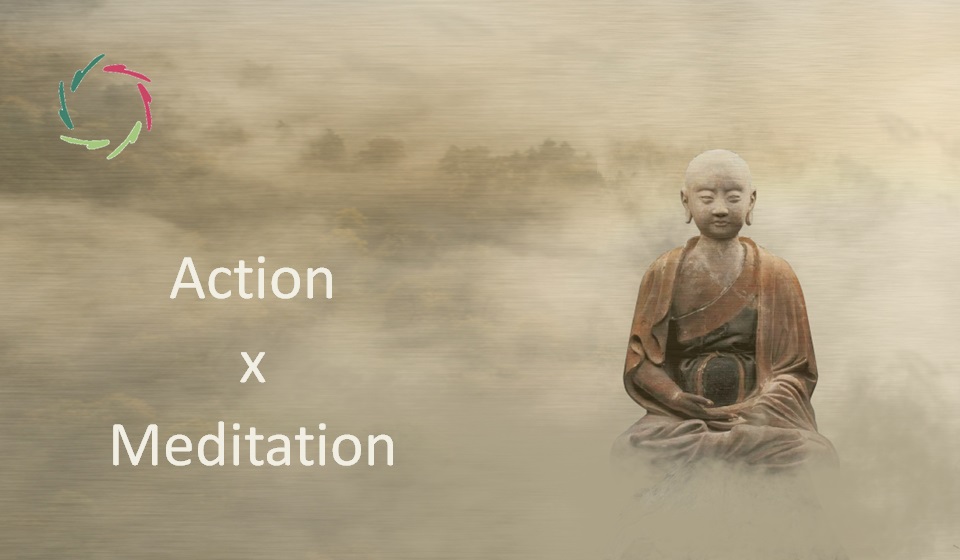Beyond Mindfulness: The Deeper Layers of Meditation

Mindfulness has gained widespread popularity, especially in the West, as a powerful tool for managing stress and cultivating awareness and presence.
However, while mindfulness is an essential first step, it’s important to recognize that it’s not the end goal of meditation. This blog explores how mindfulness can be a stepping stone toward something deeper and how we can move beyond it into the rich, expansive potential that lies beneath the surface.
Mindfulness as a first step
When we practice mindfulness, we focus on observing our thoughts, emotions, and sensations without judgment. This awareness of the present moment helps cultivate clarity and calmness, allowing us to step back from the stress and chaos of everyday life.
However, while mindfulness helps build awareness, it keeps us within the realm of conscious thought. By observing our thoughts, we remain engaged with the conceptual mind, focusing on what we can observe and label. This is valuable, but it’s not the full potential of meditation. To experience deeper growth, we must eventually move beyond mindfulness.
The limits of mindfulness
If we cling to the act of observation – constantly noticing our thoughts and sensations – we risk staying on the surface of our minds. While mindfulness helps us manage stress and gain clarity, it can also create a subtle form of control, where we are still holding on to the need to observe or manage our experience.
True meditation is moving beyond the active effort to stay present and allowing the deeper mind to unfold naturally. If we stay in the realm of observation, we may never access the subconceptual processes where real healing and transformation happen.
Going beyond: the deeper layers of meditation
When we let go of mindfulness as the end goal, we begin to tap into the deeper layers of meditation. Here, thoughts, emotions, and sensations dissolve, and the mind opens up to deeper experiences that are beyond words and concepts.
In this deeper state, meditation becomes less about what you’re doing and more about what’s happening from within. It’s a shift from actively observing to simply allowing the mind and body to align naturally. This is where profound transformation occurs — not by controlling or labeling thoughts, but by creating space for the mind to heal and grow on its own.
The glow beneath the lights
A helpful metaphor for understanding this shift is to think of meditation as being similar to observing lights on the surface of a body of water. In mindfulness, we focus on the lights — our thoughts, sensations, and observations of the present moment. But beneath those lights, there’s a glow — a deeper, more expansive state of being that underlies all experience.
When we move beyond mindfulness, we stop fixating on the lights and begin to connect with the glow beneath. This glow is the non-conceptual awareness that exists beyond the chatter of the mind. It’s a place of deep calm, where the mind no longer needs to observe, label, or control. Instead, it simply is, allowing for natural insight and healing to emerge from within.
Trusting the process: letting go of control
One of the biggest challenges in moving beyond mindfulness is learning to let go of control. In the deeper layers of meditation, you’re no longer trying to stay aware or observe each moment. Instead, you allow your mind to drift into a state of non-doing, where the natural processes of the non-conscious mind can take over.
This requires trust — trust that your mind knows how to heal and transform without your active involvement. By letting go of the need to observe, you’re creating space for deeper insights to arise, for emotions to process naturally, and for inner growth to happen without force.
Mindfulness is not the end of the journey.
Mindfulness is an excellent introduction to meditation, but to experience its full potential, we must eventually leave mindfulness behind and move into true meditation. This involves a shift from awareness to openness, from observation to integration. It’s about allowing the deeper mind to express itself in ways that can’t be controlled or even fully understood.
In true meditation, we stop engaging with the surface level of the mind and allow ourselves to sink into the depths of our being. This is where real transformation happens — not through effort or control, but through letting go and allowing the mind to naturally unfold.
In ‘Zen: Moving Beyond Western Mindfulness,‘ we explore how the Zen tradition aligns more closely with this deeper approach to meditation — moving beyond the Western focus on mindfulness.


